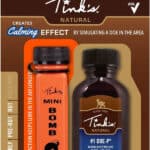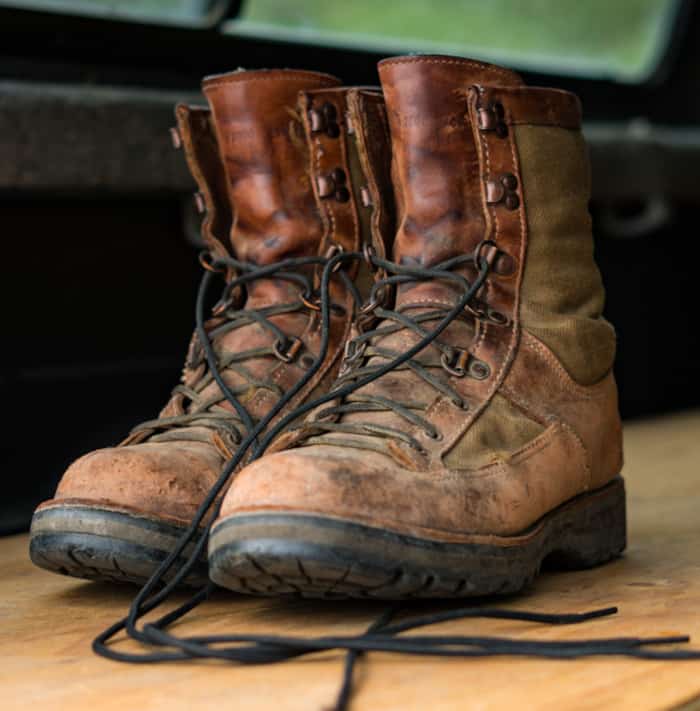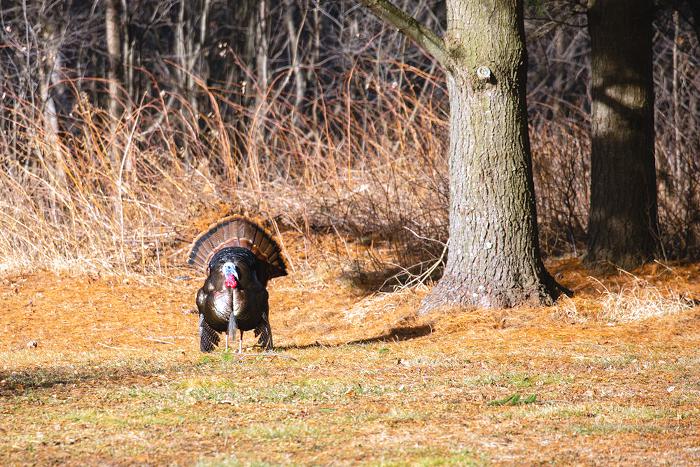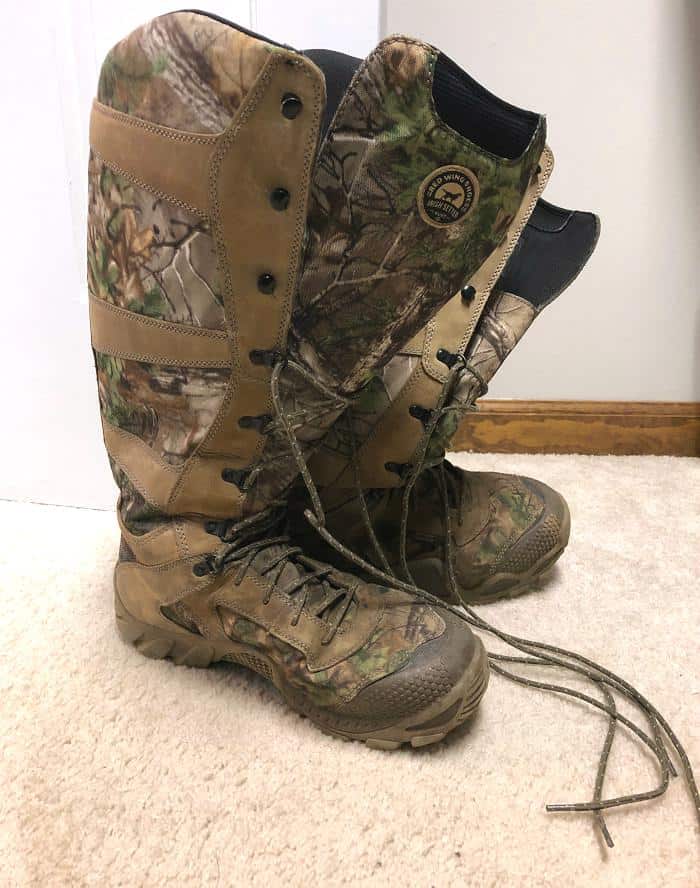Any hunter who spends time in the outdoors during the warmer months understands that they will be sharing the woods with venomous snakes. Few venomous snakes create the same fear and anxiety a hunter feels when they hear the tell-tale buzzing warning of a nearby rattlesnake. It’s an ominous sound that immediately gets your attention. In this post, I will discuss potential answers to the following rattlesnake-related question: can a rattlesnake bite through leather boots?

Since a significant number of hunting boots and cowboy boots on the market are made from leather, I completely understand how and why the answer is important to many outdoor enthusiasts.
Since I’m a hunter and fisherman, I’ll discuss the answer from a hunter’s perspective. So, why am I writing this article about rattlesnakes? Because I’m the most qualified member of our writing staff to answer snake-related questions. I’ve always had a huge interest in snakes, and I owned my first snake at 12 years old. Since then, I’ve owned several types of snakes ranging from the common corn snake to a few more exotic species like a Kenyan Sand Boa, a Vietnamese Beauty Snake (which was a major biter), and a Mangrove Snake (which is mildly venomous). The Mangrove snake was my closest experience to owning a venomous snake. However, I’ve spent quite a bit of time around several venomous snakes and have a deep respect for them.
Overview of the Rattlesnake Family
A rattlesnake is a species of venomous snake that is part of the Pit Viper (Family Name: Viperidae) family of snakes. This snake gets its name because it has a rattle on the end of its tail, which it rattles as a warning whenever the snake feels threatened. The rattles are hollow and generate a loud buzzing sound when activated.
This snake species consists of 36 currently identified species with around 70 known subspecies. This species is only found in North and South America and is a leader in snakebite incidences in North America. Of the four known venomous snakes in the United States, the rattlesnake is the largest (from a length perspective) venomous snake. The largest rattler species is the Eastern Diamondback, which can grow to a length of 8 feet.
Being a Pit Viper, rattlesnakes have moveable fangs that are deployed during a bite. When not in use, the fangs fold into the roof of the snake’s mouth, resting against the top of its mouth. When needed, a rattlesnake opens its mouth and uses muscle contractions to move the fangs from the roof of the mouth into an upright position. As with almost all the snakes in the Pit Viper family, the fangs are hollow like a hypodermic needle and deliver venom by contracting muscles around the venom glands above the fangs.
Strength of Venom
The venom itself is a modified form of saliva that is hemotoxic as it destroys tissue and begins the digestion process in prey. In addition, some sub-species of this snake utilize a venom mixture that also contains a neurotoxic component that impacts the victim’s nervous system. These sub-species include the Mojave and Tiger rattlesnake species.
With venomous snakes, three common factors are considered when evaluating the toxicity of the venom from a particular species. Those factors are:
- Toxicity of the Venom
- Amount or volume of Venom Delivered
- Age of the Snake
Let’s dive a bit deeper into each topic.
Toxicity of Rattlesnake Venom
The United States is home to four venomous snake species that are recognized as being dangerous to humans. Those four species come from either the Pit Viper or the Elapid family.
Venomous pit vipers in the United States include the following species:
- Rattlesnake
- Copperhead
- Cottonmouth/Water Moccasin
The single member of the venomous Elapid family of snakes found in the United States is the Coral snake. Of the venomous species, the copperhead snake is the most common and prolific.
For the most part, all pit viper venom is hemotoxic, with a few species having a neurotoxic component as well. The Coral snake features short, fixed fangs that require the snake to hold on and chew its victim for thorough envenomation (much like the Cobras, who are also in the Elapid family).
From a straight toxicity standpoint, the diminutive Coral snake has the most toxic venom drop for drop of any North American snake. However, its small size venom delivery system (short, fixed fangs, small mouth, and small venom load) makes a serious human envenomation difficult.
Behind the Coral snake, several members of the Rattlesnake family are considered to have the next most potent venom drop for drop. The Tiger rattler species are generally recognized as having the most potent venom of any rattlesnake species, with the Mojave rattler coming in a close second. However, the neurotoxic component found in Mojave venom complicates medical treatment and can lead to significant complications.
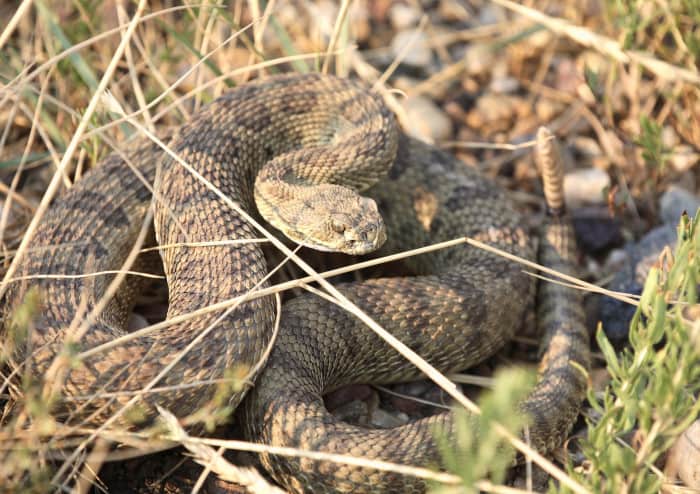
It’s also worth noting that rattlesnakes are one of the few venomous snake species that occasionally bite humans but don’t inject any venom. These venom-less bites are called “dry bites” and only occasionally occur when the snake is acting in perceived self-defense.
Herpetologists have a few different theories about why dry bites occur:
- Some believe that, since venom is necessary to hunt and eat, some rattlesnakes opt to preserve their venom in a self-defense bite.
- Others believe that a dry rattlesnake bite occurs because the snake has already used its venom in a hunting scenario and has not had sufficient time to produce more.
However, statistically speaking, rattlesnakes deliver far more venomous bites versus dry bites annually.
Amount or Volume of Venom Delivered
Another aspect that plays a direct role in determining the toxicity of a particular snake’s venom is the venom load or volume of venom that can be delivered in a bite.
Several factors affect the amount of venom a rattlesnake can deliver in a bite. Those factors include the following:
Size of the Snake
With rattlesnakes, the snake’s size can directly impact the amount of venom delivered in a single bite. Larger rattlesnakes typically carry more stored venom, so they have more available if needed.
As mentioned previously, the largest rattlesnake species is the Eastern Diamondback, which can exceed 7 feet in length and weigh nearly 30 pounds. A rattlesnake that size has a much larger load of venom compared to a Pigmy Rattlesnake that never gets longer than 16 inches.
In the case of the Eastern Diamondback species, it leads all other Rattlesnake species in terms of serious and fatal bites annually. While the venom of the Eastern Diamondback isn’t as potent as the Mojave, the Eastern Diamondback can more than makeup for the less toxic venom with a significant increase in the total volume of venom injected. Researchers have harvested as much as 450 milligrams of venom from a large Eastern Diamondback in a single bite.
Before antivenom was developed, it’s believed that bites from an Eastern Diamondback had an estimated 25% fatality rate.

Age of the Snake
Another factor that impacts the overall toxicity of rattlesnakes is the age of the snake. Studies have shown that older rattlesnakes produce more potent venom than younger ones. While newborn rattlesnakes are born with venom that is ready to go, it’s not as potent as venom from adult snakes.
The older snakes tend to be larger as well, so the larger snakes are the most dangerous due to venom load and venom potency.
Is a Rattlesnake Able to Bite Through Leather Boots?
The question asking if rattlesnakes can bite through a leather boot is a tough one to answer because there isn’t a hard and fast answer that covers all the different variables.
In trying to answer the question, several variables come into play, including the following:
- The thickness of the leather used for the boots
- Condition of the leather
- Size of the snake
- Length of the fangs
Here’s a more thorough discussion of each sub-topic:
Thickness of the Leather Used for the Boots
Not all leather boots are created equal, and each boot brand uses its own type, style, and thickness of leather in the boot-making process. As such, the thickness or width of the leather used in the manufacturing process can vary greatly. In some cases, those variances in the leather thickness can range from ¼” up to ¾”.
The leather thickness plays a direct role in determining if a rattlesnake or any other snake can penetrate the leather to make contact with the wearer. Therefore, thick leather boots have a better chance of stopping a bite compared to thin leather.
For example, casual leather boots are typically produced from a thinner leather versus hunting boots, work boots, or hiking boots. That style of thin leather boots is more offers less protection against snake bites.
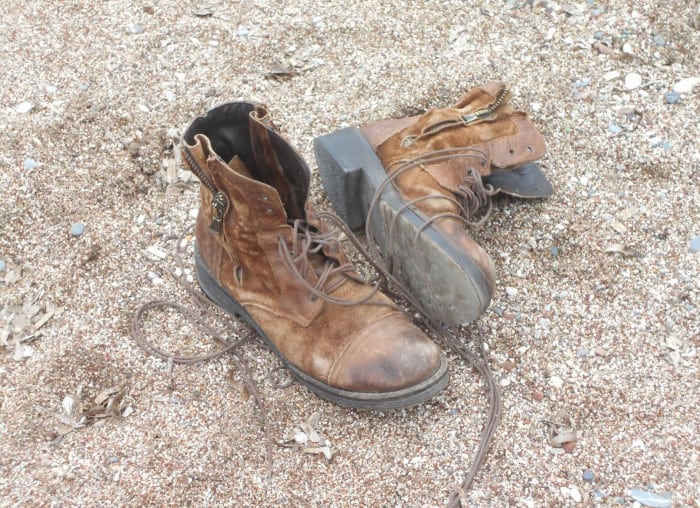
Condition of the Leather
Another factor that may play a role in answering the question involves the condition of the leather. Leather is an organic material that does require some maintenance to function. If the leather, especially full-grain leather, isn’t maintained over time, it will begin to degrade. If the material becomes too dry, it will crack, and the creases will start to weaken.
Poorly maintained leather boots may not stop a snake bite as well as an adequately maintained pair. This is especially possible in a situation involving a large snake with above-average length fangs.
Snake Size
As mentioned previously, the size of the rattlesnake is another potential factor in determining the possibility of fang penetration from a snake. The larger rattlesnake sub-species (like the Eastern Diamondback) have larger, more muscular heads, which is believed to equate to a more powerful bite in terms of the volume of force being exerted.
In addition, larger-sized rattlesnakes can open their mouths wider during a strike than smaller snakes, which may also play a role in their potential ability to penetrate a leather boot.
Length of the Snake Fangs
The final consideration in the discussion centers on the length of the rattlesnake’s fangs in question. Most average-sized rattlesnake species have fangs in the ½ to ¾ inch range. However, the larger rattlesnake sub-species typically have larger and longer fangs. For example, a six or seven-foot Eastern Diamondback rattler can have fangs that can easily exceed one inch in length, with some larger specimens being recorded with fangs over one and three-fourths inches long.
Suppose a leather boot was constructed with ¾” leather. In that case, it’s certainly possible that a big rattler with 1-inch fangs could potentially penetrate that boot. However, it’s unlikely that the fangs on a Pigmy rattler, which average ¼”, would penetrate that same boot. Generally speaking, the small snakes tend to have shorter fangs. The longer the fangs, the greater chance that the fangs could penetrate thick leather boots.

Snake Boots Are a Better Option
Since snakes can bite through leather boots, my suggestion would be to invest in a decent pair of snake proof boots, since those boots are designed to protect against snake bites. Snake proof boots work, and are not that expensive. This type of specialized boots offer a much better approach to protect your feet from snakes.
FAQS
Here are some commonly asked questions that I see associated with a snake bite through leather:
Can rattlesnakes bite through rubber boots?
I’d say the same criteria apply in this scenario as those discussed with leather boots. The snake’s size, the length of its fangs, and the thickness of the rubber boots are variables that impact the potential answer. A large Eastern Diamondback rattler could potentially bite through a pair of rubber boots, especially if the rubber were thin. For example, an above-average-sized rattlesnake would likely penetrate inexpensive rubber rain boots.
Do cowboy boots protect from snake bites?
Cowboy boots are a little bit different from general leather boots in their construction and design. In addition, cowboy boots are generally divided into dressy models and working models. Working cowboy boots are crafted from thick leather and designed to withstand the rigors and abuse from working cowboys and ranch hands. Depending on the leather thickness and quality of construction, a pair of working cowboy boots would have a good chance of protecting the wearer from most snake bites. The only exception might be a large snake with above-average fangs.
Are basic leather boots snake proof?
That’s a difficult question to answer without some additional details. Without further information, my initial answer would be to say that basic leather boots are not snake proof. However, as discussed above, the leather thickness used in the boots, the overall size of the snake, the specific type of boot, and the size of the snake’s fangs will potentially determine if a standard pair of leather boots can repel a snake bite.

Born and raised in the North Carolina foothills, Andy was introduced to the outdoors at a very young age. Like most beginning hunters, he started out hunting small game like rabbits and squirrels, then graduated to larger species like Whitetail Deer. Although he’s an avid deer and turkey hunter, he still enjoys hunting small game as well. Andy has worked in the hunting and fishing industry for nearly 25 years.

